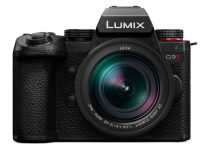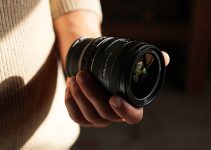While the A7R IV is quietly hitting the shelves and many filmmakers are having their first encounter with the recently announced beast, many others frankly still enjoy shooting with the older sibling, the Sony A7 III. This camera, that was the second iteration (but wee hope not the last!) as Sony’s filmmaker-oriented mirrorless has still plenty to offer – high-quality 4K videos, a good dynamic range, decent weight, and portability.
The camera ticks a lot of boxes in the indie filmmaker’s checklist. But just as all mirrorless cameras, it’s easy to improve ergonomics and functionality with a bunch of accessories, often even cheap ones. That’s what Tech Gear Talk has done recently and is now offering a quick recap of the setup he uses to shoot on the A7 III.
Sony A7 III Essential Accessories
- SmallRig Camera Cage for Sony a7R III (B&H, Amazon)
- SmallRig NATO Side Handle (B&H, Amazon)
- SmallRig Top Handle with Shoe Mount (B&H, Amazon)
- Lilliput A7S 7″ Full HD Monitor with 4K Support (B&H, Amazon)
- Rode VideoMic Pro+ (B&H, Amazon)
- Rode RODELink Filmmaker Kit (B&H, Amazon)
- Sigma 18-35mm f/1.8 DC HSM Art Lens (B&H, Amazon)
- Lume Cube 2.0 (B&H, Amazon)
- SanDisk 128GB Extreme PRO UHS-II (B&H, Amazon)
- Lexar 128GB Professional 1000x UHS-II (B&H, Amazon)
- Beachtek DXA-MICRO-PRO PLUS (B&H, Amazon)
- Sony Alpha a7 III Mirrorless Digital Camera (B&H, Amazon)
The Cage
As almost all the mirrorless offerings out there, you’ll see many shooters using a cage in a production environment as the base of their rig. Wrapping the camera in a cage is paramount, as it offers an extra layer of protection around our investments.
Plus, cages allow to mount accessories through the many threaded holes (and sometimes rails), and finally, they increase the size a little bit, often giving a better grip on those small cameras. Tech Gear Talk suggestion in this particular situation is the SmallRig Camera Cage designed for the A7 III. The offering is on point, light, and sturdy and does not interfere with any slot or cover of the camera, leaving all IN/OUT and doors easily accessible.
Handles
The cage that keeps the camera protected is offering a lot of mounting points. What’s the first improvement we can obtain with those mounting points? Well, we can get better handling. As a rule, compact mirrorless cameras are difficult to hold, sometimes you can’t even wrap your whole hand around since they’re too small, but a nice side handle will give you all the grip you need while shooting.
Having a second holding point grants even greater stability in shots. Similarly, a nice top handle gives another choice to grab the camera without worrying about damaging anything, especially when shooting very low or carrying the setup around.
Monitor
As everyone that has shot anything on a mirrorless camera knows those things have tiny screens. Evaluating focus while shooting, framing and even reviewing footage on the small onboard LCDs can be a great source of fatigue on the eyes, and as filmmakers, there are few things that are more precious to us than our eyes.
Having a nice field monitor is a must, especially with today’s higher resolutions that are quite unforgiving, even with the slightest error in focus. There are plenty of monitors available, but you should always look for all the bells and whistles – false color, histogram, peaking, whatever could be the visual assist that fits better in your workflow. There are so many cheap options like the Lilliput A7S, hence buying a monitor that’s missing some essential assist features is almost a felony.
Mics
Cameras, even the higher-end ones, are not the best tool to handle and record audio. After all, there’s usually a sound guy with an external recorder on bigger productions. But there are some excellent solutions for DSLRs and mirrorless cameras as well.
Discard the built-in mics, as they are not a good choice if you need anything more than a rough scratch audio track. A small shotgun mic on top of the camera will be probably the easiest way to increase the production value of your videos. Rode has more than a few offerings for filmmakers, for instance, the Rode Video Mic Pro+.
If you’re going to run and gun and need a simple and effective solution, that’s the kind of mic that can fit your needs. It provides excellent built quality and some awesome features. Besides being a super-cardioid, the unit has automatic on-off, low-pass filters, high-pass boost and a +20dB gain that allows to pull down the in-camera pre-amps, thus avoiding the noise that can come from the latter.
If you need to interview someone and you do not care for all the ambiance, you could go with a wireless kit. There are many options, most of them are considerably expensive, but the RodeLink Filmmaker Kit is a godsend. Easy, slick, and light, you can just pop it in, check that both receiver and transmitter are on and you’re ready to go.
Lenses
There are probably more lenses in this world than stars in the sky. There are so many options to choose from, but you’ll have to pick one. Here we can see the Sigma 18-35mm f1.8, a beautiful lens specifically made for Sony cameras.
It has a great image quality, it’s extremely fast (and that’s cool if you shoot at night or in dim environments), but it’s made for smaller sensors. That means that on the full-frame A7 III, you’ll have to keep the APS-C mode on, or you’ll end up with a heavy vignetting on the border of the frame.
Light
Even if the whole Sony lineup is well known for the unrivaled low light performance and for the incredible ISO these cameras can achieve without having digital noise destroying the image, it’s not too bad to have a light. A small and lightweight, almost pocketable light is exactly what could make a difference between an amateur shot and a pro one.
A small feathered light will soften the shadows and if placed in the right spot, it may give a fill or separate the talent from the background when used as a backlight. Here, you can see the perfect example – the Lume Cube. It’s extremely small and easy to use. It even has customization through an app and light modifiers that you can physically mount on, like barn doors, diffusion domes and such.
Recording media
Going on, we can’t forget the media we’ll be recording on. A lot of SD cards have flooded the market in the last decade but unfortunately, not all SD cards are equal as some are much better than others.
Furthermore, SD cards can get corrupted, they can get lost and damaged, so it’s better to have a pro-grade card such as the SanDisk Extreme Pro or Lexar Professional 1000x to start with. Carry always some extra ones with you, you may never know when you could need some.
Batteries
There’s never enough juice to keep your rig going. Since most mirrorless cameras are relying on small and tiny batteries born in still photography’s world, more often than not filmmakers have to battle time to charge back batteries while they go down.
A good charger can be a life-changer. It’s true that the A7 III has a wonderful battery life, but it’s always better to have a spare, right? Now, out of the box the A7 III (as many other cameras in Sony’s lineup), has no separate battery charger.
You’d expect to have one since these cameras are not that cheap and it would be nice if Sony addresses this oversight down the line. However, if you never want to miss anything and always be prepared, there are some small dual chargers that can easily fix this inconvenience.
Sound mixing
There is another big gap mirrorless cameras have to overcome to be on par with the conventional cinema cameras, and that’s having multiple audio inputs. It can be difficult to have different mics or get clean audio from an XLR cable when you rely on a lonely 3.5mm jack input port.
That’s why, when you need to have that kind of functionality, you can use the Beacktek DXA-Micro Pro+. This small device will completely change your shooting workflow. Having two 3.5mm or one XLR input will allow you to easily attach two mics providing balanced audio that you can adjust on the fly through the front knob.
If you are working on a single audio source instead, you can use the unit to record a safety track at -10dB, so that if there are sudden audio spikes, you’ve still got perfectly clean and professional recording. This tool is a must-have, no doubt on that.
So there we go, a nice list of accessories that you should look at if you’re going to give yourself a small gift and make all of your workflow a little bit easier.
Some are quite classics, and you probably have already integrated them in your rig, but others can be a nice add-on you might have never thought about. In any case, this list may prove to be useful to someone, so don’t hesitate to share it with your fellow filmmakers as well.
[source: Tech Gear Talk]
Disclaimer: As an Amazon Associate partner and participant in B&H and Adorama Affiliate programmes, we earn a small comission from each purchase made through the affiliate links listed above at no additional cost to you.
Claim your copy of DAVINCI RESOLVE - SIMPLIFIED COURSE with 50% off! Get Instant Access!





